I'm trying to understand scipy.signal.deconvolve.
From the mathematical point of view a convolution is just the multiplication in fourier space so I would expect
that for two functions f and g:
Deconvolve(Convolve(f,g) , g) == f
In numpy/scipy this is either not the case or I'm missing an important point. Although there are some questions related to deconvolve on SO already (like here and here) they do not address this point, others remain unclear (this) or unanswered (here). There are also two questions on SignalProcessing SE (this and this) the answers to which are not helpful in understanding how scipy's deconvolve function works.
The question would be:
- How do you reconstruct the original signal
ffrom a convoluted signal, assuming you know the convolving function g.? - Or in other words: How does this pseudocode
Deconvolve(Convolve(f,g) , g) == ftranslate into numpy / scipy?
Edit: Note that this question is not targeted at preventing numerical inaccuracies (although this is also an open question) but at understanding how convolve/deconvolve work together in scipy.
The following code tries to do that with a Heaviside function and a gaussian filter. As can be seen in the image, the result of the deconvolution of the convolution is not at all the original Heaviside function. I would be glad if someone could shed some light into this issue.
import numpy as np
import scipy.signal
import matplotlib.pyplot as plt
# Define heaviside function
H = lambda x: 0.5 * (np.sign(x) + 1.)
#define gaussian
gauss = lambda x, sig: np.exp(-( x/float(sig))**2 )
X = np.linspace(-5, 30, num=3501)
X2 = np.linspace(-5,5, num=1001)
# convolute a heaviside with a gaussian
H_c = np.convolve( H(X), gauss(X2, 1), mode="same" )
# deconvolute a the result
H_dc, er = scipy.signal.deconvolve(H_c, gauss(X2, 1) )
#### Plot ####
fig , ax = plt.subplots(nrows=4, figsize=(6,7))
ax[0].plot( H(X), color="#907700", label="Heaviside", lw=3 )
ax[1].plot( gauss(X2, 1), color="#907700", label="Gauss filter", lw=3 )
ax[2].plot( H_c/H_c.max(), color="#325cab", label="convoluted" , lw=3 )
ax[3].plot( H_dc, color="#ab4232", label="deconvoluted", lw=3 )
for i in range(len(ax)):
ax[i].set_xlim([0, len(X)])
ax[i].set_ylim([-0.07, 1.2])
ax[i].legend(loc=4)
plt.show()
Edit: Note that there is a matlab example, showing how to convolve/deconvolve a rectangular signal using
yc=conv(y,c,'full')./sum(c);
ydc=deconv(yc,c).*sum(c);
In the spirit of this question it would also help if someone was able to translate this example into python.


